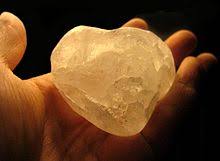 |
| Giustiniani-Odescalchi castle, Bassano Romano |
 |
| entrance flanked with Roman busts |
Fellini's La Dolce Vita is one of the best known and loved films in the history of Italian cinema.
We all recognize the iconic image of Anita Ekberg cooling off in the Fountain of Trevi,but how many know that large sections of the film were shot in the Giustiniani-Odescalchi castle of Bassano Romano, an unassuming hamlet which until 1964 was known as Bassano di Sutri.
 |
| church adjacent to castle |
The Giustiniani family were originally from Genoa and their wealth came from commerce, especially the importation of alum from the Greek island of Chios, at a time when alum was worth more than its weight in gold.
 |
| alum |
At the apex of his career (around 1600-1610) Vincenzo Giustiniani invested this wealth in art and property.
 |
| St. Jerome by Caravaggio, once in the Giustiniani collection |
The family had palazzi and castles in several towns besides Bassano and it seems that the vast art collection included more than a dozen works by Caravaggio.
 |
| grotesques or flower fairies? |
To decorate the Bassano castle numerous artists were employed including Bernardo Castello from Genoa, Tempesta and Squarzina who painted The Four Seasons fresco cycle.
Bassano became the summer hideaway where Giustiniani and later the Odescalchi nobles escaped the heat and hassle of Rome.
Vincenzo enjoyed hunting in the extensive woods and gardens which are still connected to the castle by a bridge-like passageway.
 |
| Myth of Tetone, Galleria Albani 1609 |
In modern times, the Giustiniani-Oldescalchi castle has always been a mysterious place, rarely open to the public, and most people have seen the interiors only in the films shot there.
It has eluded me for over 40 years, but finally one hot weekend in July the property was opened for guided tours during the annual town festival.
 |
| Dottoressa Rita Fabretti, our expert guide |
Led by an enthusiastic expert who has studied the Giustiniani diaries, our small group was led up the staircase and through the saloni of the piano nobile where the ceilings of every room are embellished with frescoes.
 |
interior courtyard, with passageway leading to the gardens
notice headless statue |
 |
| signing up for the tour |
In Fellini's La Dolce Vita actors carrying lighted candlebra romped through the courtyard and along the garden paths. They were depicting the decadence of Roman nobility and interestingly enough, some of these film extras were actually members of the very caste they were deriding.
Generations of neglect, irresponsible caretakers and careless film crews have added to the problems of the huge property.
 |
| missing fireplace |
Over the last few decades anything of value that was not attached to the walls (or ceilings) was carried off and sold. Thus the gaping holes where fireplaces once stood and headless statues. Only the frescoes remain to remind us of the property's glorious past.
 |
| empty rooms |
When the castle was on the brink of complete ruin, the local university contemplated purchasing it. The several hundred hectares of prime forest land and the huge gardens would have made a perfect Forestry laboratory.
 |
| Door to castle gardens-will they ever be open to the public? |
















